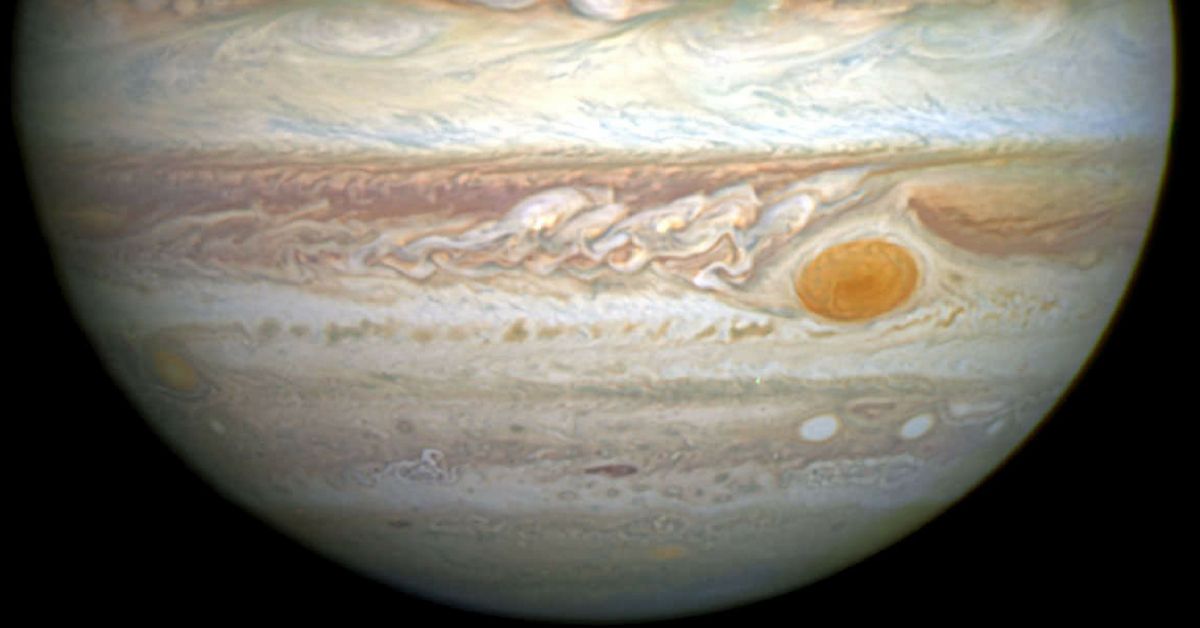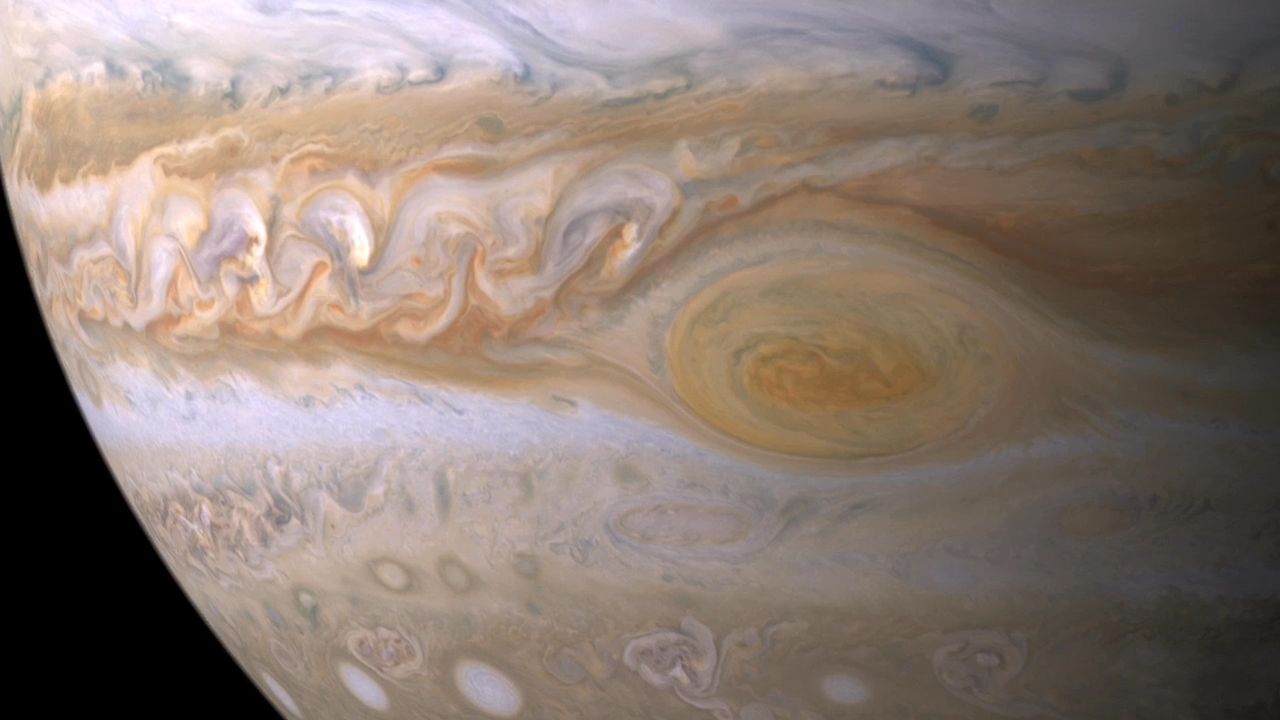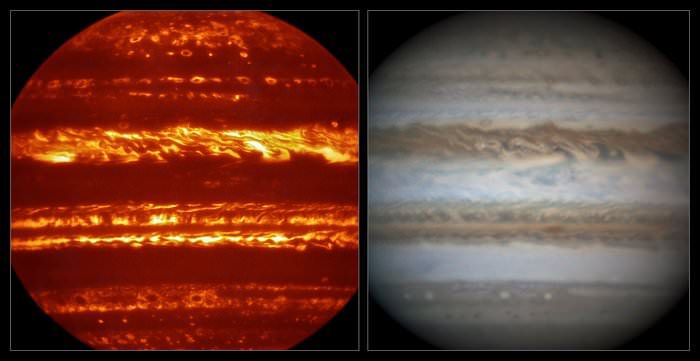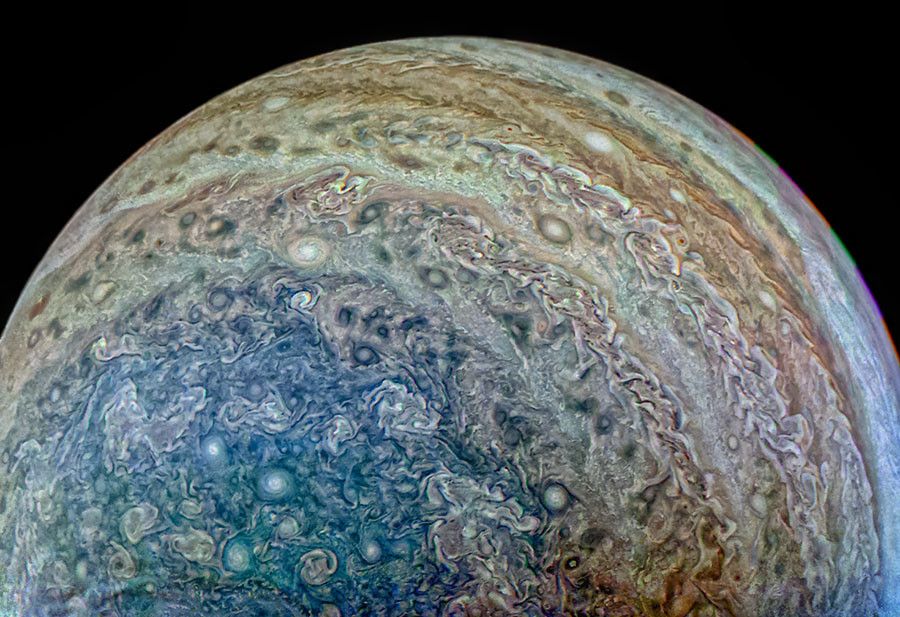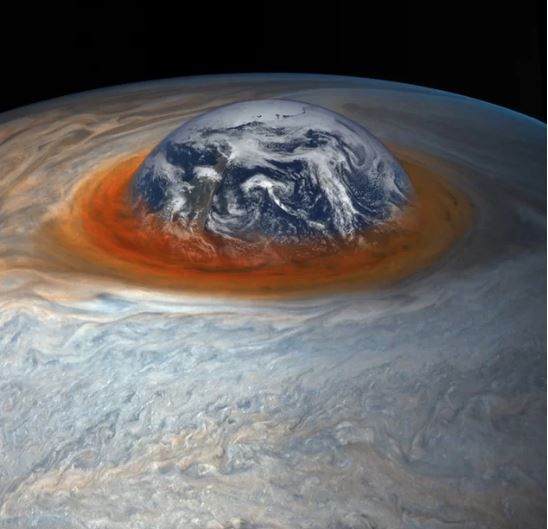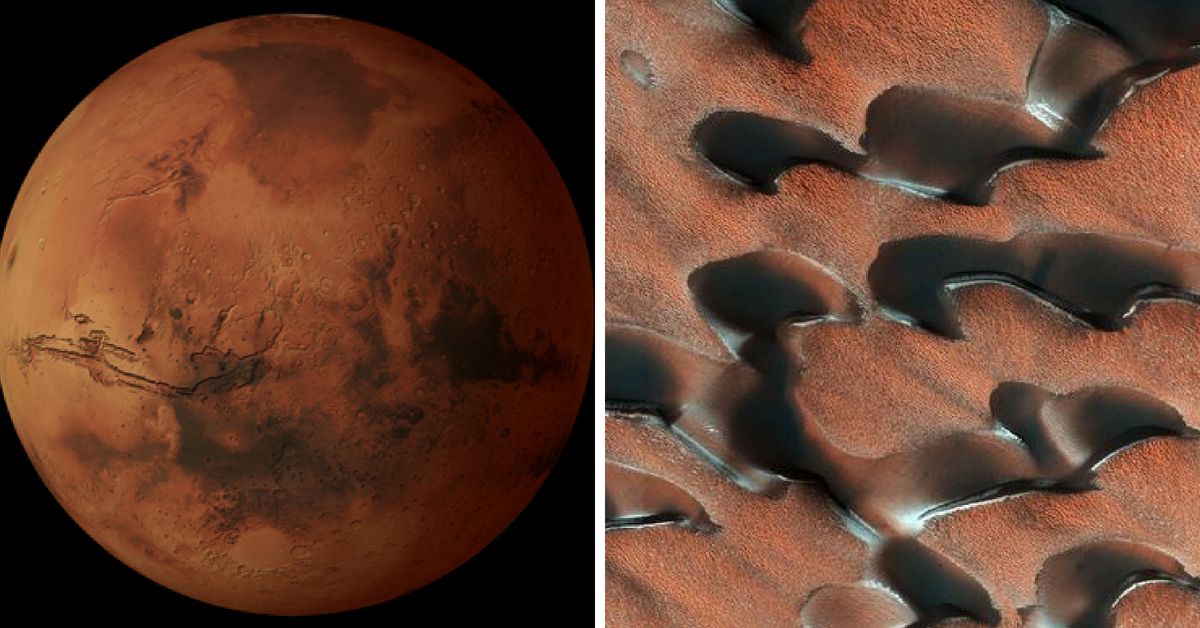Jupiter's mesmerizing, colorful stripes have been one of our solar systems biggest mysteries.
The gas giant is mostly made up of hydrogen and helium, which is in stark contrast with Earth's elemental composition and atmosphere, which is mostly made up of nitrogen and oxygen.
For that reason, it's been hard for scientists to understand exactly how Jupiter's atmosphere works.
Researchers from Australia and the U.S. think they've unlocked the mystery between the planet's atmosphere and its magnetic field using the Juno space probe, which orbits the planet.
"We know a lot about the jet streams in Earth's atmosphere and the key role they play in the weather and climate, but we still have a lot to learn about Jupiter's atmosphere," Dr. Navid Constantinou from the Research School of Earth Sciences at The Australian National University (ANU) said.
What they think they've discovered is quite interesting
Those spectacular storms you see on the planet aren't just happening on its surface.
The winds have been found to extend approximately 1864 miles (3000km) deep, which means there's something interesting going on below the surface.
"Scientists have long debated how deep the jet streams reach beneath the surfaces of Jupiter and other gas giants, and why they do not appear in the sun's interior," Dr Constantinou said.
The new study, published in The Astrophysical Journal, suggests that Jupiter has powerful magnetic fields.
"The gas in the interior of Jupiter is magnetized, so we think our new theory explains why the jet streams go as deep as they do under the gas giant's surface but don't go any deeper," Co-researcher Dr. Jeffrey Parker from Livermore National Laboratory said.
Constantinou added that "Earth's jet streams have a huge impact on the weather and climate by acting as a barrier and making it harder for air on either side of them to exchange properties such as heat, moisture and carbon."
Something similar happens on Jupiter, where clouds of ammonia take form on the upper atmosphere, giving the planet's those colorful storms.
As for Jupiter's straight clouds, the study revealed that because these storms move much faster than storms on Earth, they appear as lines.
"There are no continents and mountains below Jupiter's atmosphere to obstruct the path of the jet streams," Dr. Parker said.
"This makes the jet streams on Jupiter simpler. By studying Jupiter, not only do we unravel the mysteries in the interior of the gas giant, but we can also use Jupiter as a laboratory for studying how atmospheric flows work in general."
So what about the Great Red Spot?
According to researchers, the high-pressure region in Jupiter's atmosphere, causing those majestic swirls, could disappear in the next two decades.
This storm, which is bigger than Earth, was spotted centuries ago, and has maintained its vortex because of the planet's powerful jet streams.
Over the last few decades, the width of the giant spot has been measured over and over again, and scientists have discovered that that the storm is shrinking.
Because Jupiter spins faster and has tens of thousands of miles of atmosphere, it's not strange that the planet has a storm that has lasted this long.
What's strange will be that one day we'll wake up and see a more tranquil-looking planet.
Have you always been fascinated by Jupiter's colorful storms?
[H/T: news.com.au / Space]
